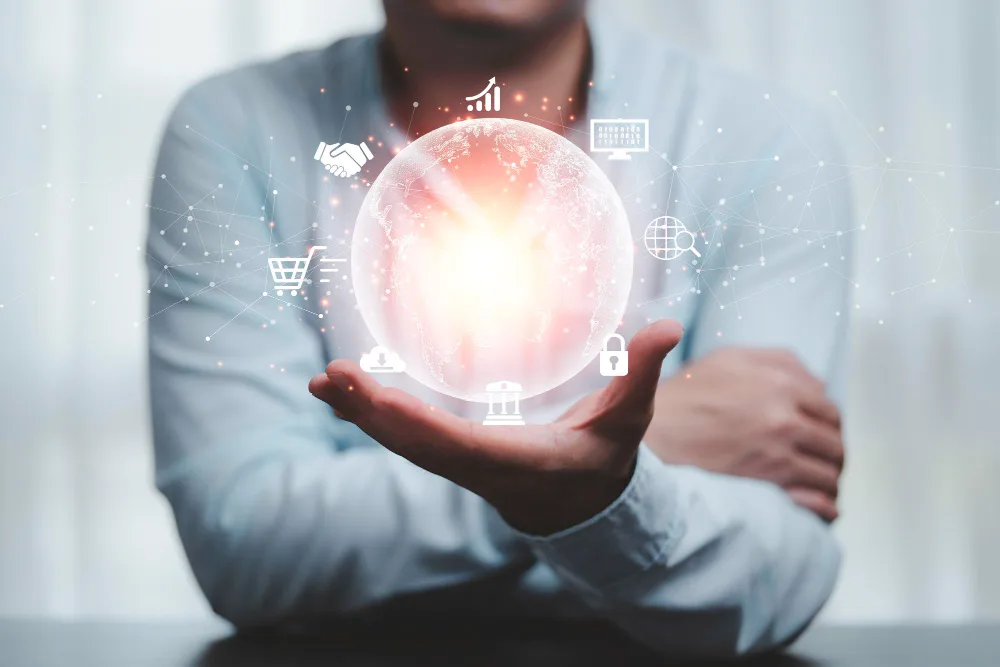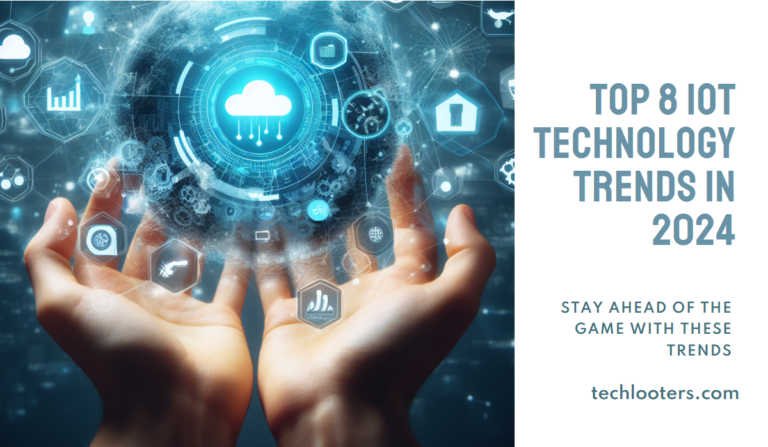The Future of IoT Technology Trends: Shaping 2024 and Beyond
In a world driven by artificial intelligence, data, and rapidly advancing connectivity technologies, the 'Internet of Things' (IoT) emerges as a pivotal force, influencing and catalyzing innovation across various industries. As we navigate the evolving market landscape, businesses must stay vigilant, creatively adapting to emerging technologies to stay ahead. In this comprehensive exploration, we delve into the future of IoT technology, dissecting trends that are reshaping global markets in 2024.
IoT Technology Trends: A More Connected World
In the realm of IoT, a paradigm shift is underway. The traditional monolithic model gives way to a more modular, microservices approach. Devices no longer operate in isolation; instead, they form a network, each contributing uniquely to the system. This shift embodies the essence of IoT, facilitating a more connected and efficient world.
IoT Technology’s Growth
The IoT technology market is poised for staggering growth, projected to reach $1.39 trillion by 2026 according to Mordor Intelligence. The catalysts for this surge are manifold, with the COVID-19 pandemic accelerating remote monitoring, smart home devices, and AI solutions dependent on IoT infrastructure. The efficiency gains of IoT networks over centralized solutions further fuel this exponential growth.
However, a shadow looms over this growth in the form of a chip shortage. Exacerbated by the pandemic, the shortage has led to increased production costs. Forrester predicts a 10 to 15% limitation on IoT market growth in 2022. The European Chips Act offers a glimmer of hope, injecting support to alleviate the supply chain crisis.

IoT is Powered by Bandwidth
The crux of IoT Technology trends lies in bandwidth optimization. Enhanced bandwidth translates to lower latency, crucial for seamless communication within an IoT network. Advances in 5G networks and Wi-Fi 6 have significantly bolstered IoT capabilities, unlocking its full potential with faster wireless data rates.
Trend 1: AIoT – Artificial Intelligence & IoT Technology
A symbiotic relationship unfolds between artificial intelligence (AI) and IoT. AI thrives on the distributed data provided by IoT sensors, while IoT benefits from AI's advanced management capabilities. The marriage of these technologies propels the value of AI in IoT to an estimated $14,799 million by 2026, particularly evident in applications like predictive maintenance in manufacturing.
Visual inspection emerges as a synergy point, where AI and IoT collaborate to enhance industrial processes. High-quality data from IoT sensors becomes the linchpin for machine learning applications, catalyzing advancements in various industries.
Trend 2: IoT Connectivity — 5G, Wi-Fi 6, LPWAN, and Satellites
The evolution of IoT hinges on improving wireless data rates. Connectivity technologies such as 5G, Wi-Fi 6, LPWAN, and satellite networks play pivotal roles in amplifying the efficiency of IoT solutions.
- 5G: Revolutionary for IoT, 5G networks outpace their predecessors, ensuring swift data processing for IoT networks.
- Wi-Fi 6: Operating in the 6 GHz band, Wi-Fi 6 elevates bandwidth potential, especially beneficial for smart home IoT networks.
- LPWAN: Low-power wide-area network connectivity emerges as an energy-efficient solution, ideal for machine-to-machine communication over large areas.
- Satellite: For geographically dispersed networks, satellite-powered IoT devices provide a lifeline, exemplified by applications like Traksat's emergency incident reporting.
Trend 3: Edge Computing – Low Latency & Security
Real-time applications hinge on edge computing, where data processing occurs closer to the user, minimizing latency. Beyond reducing latency, edge computing enhances data security by minimizing opportunities for interception. This proves critical in contexts like security, safety, and autonomous vehicles, where split-second decisions are imperative.
Trend 4: Wearable IoT Technology
Wearable IoT devices, including smartwatches, earbuds, and AR/VR headsets, emerge as transformative elements in 2024. While smartwatches may not replace smartphones, their potential in healthcare is significant. Continuous health monitoring, emergency alerts, and seamless integration with medical processes mark the trajectory of wearable IoT technology.

Trend 5: Smart Homes
The proliferation of digital assistants like Google Assistant and Amazon Echo catalyzes the evolution of smart homes. With IoT technology managing a myriad of devices, the smart home market is poised for a 25% CAGR, reaching $246 billion by 2025. The focus shifts towards smart home automation, leveraging AI algorithms for tasks such as lighting, temperature control, and security.
Trend 6: Smart Cities
IoT technology finds multifaceted applications in smart cities, from traffic monitoring to water level management. Smart streetlights, acting as sensor platforms, offer diverse functionalities like weather monitoring, traffic control, public Wi-Fi, and surveillance. The experiment with self-driving shuttles in Smart Columbus highlights the potential for smart cities to revolutionize urban mobility.
Trend 7: IoT Technology in Healthcare
Beyond wearables, IoT technology reshapes healthcare through efficient telemedicine facilitated by WebRTC and IoT networks. Hospital-room sensors, coupled with IoT, offer continuous patient monitoring. The accelerated evolution of healthcare IoT is underscored by the intersection with WebRTC and the demands of the COVID-19 era.
Trend 8: Connected Networks Aid Manufacturers
The manufacturing industry undergoes a transformation driven by IoT technology. Sensors on factory floors automate processes, paving the way for advanced AI applications. Predictive maintenance, defect detection, and digital twins become possible through critical data provided by IoT sensors.
What’s Next for IoT Technology in 2024 and Beyond?
As we gaze into the future, the convergence of IoT with AI and other technologies promises innovation across diverse industries. The interconnected nature of these technologies empowers businesses to modernize, stay competitive, and realize visionary goals. At techlooters, we stand ready to turn your IoT vision into reality. Reach out to us, and let's embark on a journey to transform your business for the future.
What is IoT, and how has it revolutionized our lives?
IoT, a paradigm shift, has transformed traditional living into a high-tech lifestyle, connecting billions of internet-enabled devices to exchange data seamlessly.
What are the new trends and opportunities in the field of IoT?
IoT presents new trends and opportunities by connecting vast numbers of devices for data exchange, contributing to the evolution of a highly interconnected world.
What opportunities and challenges arise with IoT technologies?
Recent technological progress in IoT offers various opportunities, yet it introduces challenges that need careful consideration for effective implementation.
Can you provide insights into the trends, benefits, risks, and challenges of IoT?
A comprehensive review explores the existing technologies and applications of IoT in residential and other domains, discussing its trends, benefits, risks, and challenges.
How is IoT defined, and what are its key components?
IoT is defined as a paradigm where objects equipped with sensors, actuators, and processors communicate to serve various purposes, emphasizing the interconnected nature of devices.
What are the top 10 trends in IoT and smart devices in 2024?
In 2024, IoT trends include advancements driven by the availability and adoption of 5G connectivity, propelling the expansion of IoT.




